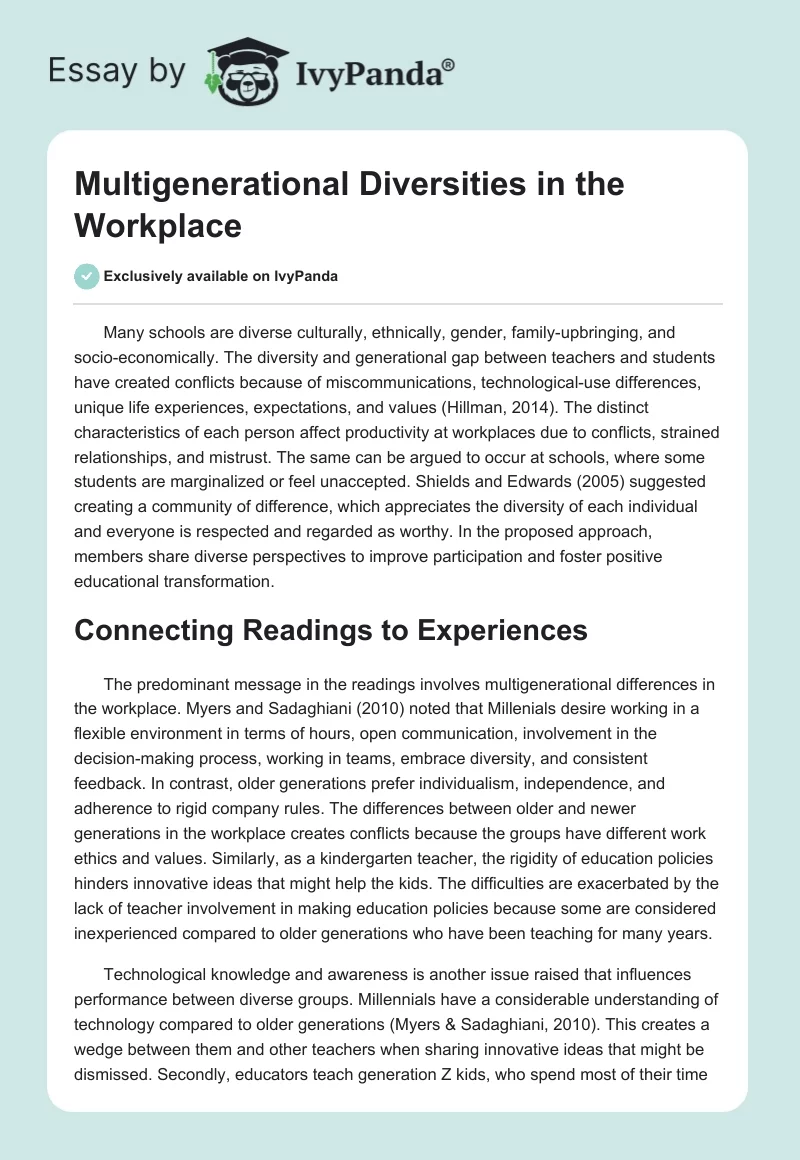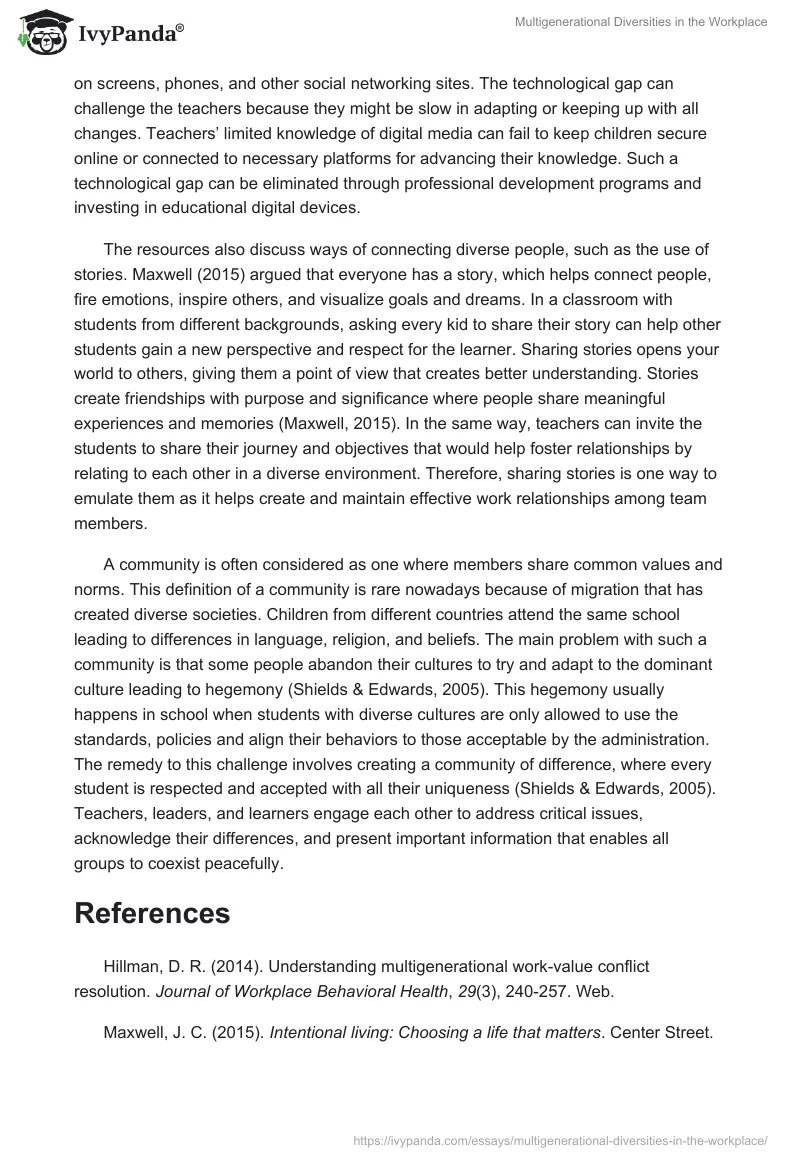Many schools are diverse culturally, ethnically, gender, family-upbringing, and socio-economically. The diversity and generational gap between teachers and students have created conflicts because of miscommunications, technological-use differences, unique life experiences, expectations, and values (Hillman, 2014). The distinct characteristics of each person affect productivity at workplaces due to conflicts, strained relationships, and mistrust. The same can be argued to occur at schools, where some students are marginalized or feel unaccepted. Shields and Edwards (2005) suggested creating a community of difference, which appreciates the diversity of each individual and everyone is respected and regarded as worthy. In the proposed approach, members share diverse perspectives to improve participation and foster positive educational transformation.
Connecting Readings to Experiences
The predominant message in the readings involves multigenerational differences in the workplace. Myers and Sadaghiani (2010) noted that Millenials desire working in a flexible environment in terms of hours, open communication, involvement in the decision-making process, working in teams, embrace diversity, and consistent feedback. In contrast, older generations prefer individualism, independence, and adherence to rigid company rules. The differences between older and newer generations in the workplace creates conflicts because the groups have different work ethics and values. Similarly, as a kindergarten teacher, the rigidity of education policies hinders innovative ideas that might help the kids. The difficulties are exacerbated by the lack of teacher involvement in making education policies because some are considered inexperienced compared to older generations who have been teaching for many years.
Technological knowledge and awareness is another issue raised that influences performance between diverse groups. Millennials have a considerable understanding of technology compared to older generations (Myers & Sadaghiani, 2010). This creates a wedge between them and other teachers when sharing innovative ideas that might be dismissed. Secondly, educators teach generation Z kids, who spend most of their time on screens, phones, and other social networking sites. The technological gap can challenge the teachers because they might be slow in adapting or keeping up with all changes. Teachers’ limited knowledge of digital media can fail to keep children secure online or connected to necessary platforms for advancing their knowledge. Such a technological gap can be eliminated through professional development programs and investing in educational digital devices.
The resources also discuss ways of connecting diverse people, such as the use of stories. Maxwell (2015) argued that everyone has a story, which helps connect people, fire emotions, inspire others, and visualize goals and dreams. In a classroom with students from different backgrounds, asking every kid to share their story can help other students gain a new perspective and respect for the learner. Sharing stories opens your world to others, giving them a point of view that creates better understanding. Stories create friendships with purpose and significance where people share meaningful experiences and memories (Maxwell, 2015). In the same way, teachers can invite the students to share their journey and objectives that would help foster relationships by relating to each other in a diverse environment. Therefore, sharing stories is one way to emulate them as it helps create and maintain effective work relationships among team members.
A community is often considered as one where members share common values and norms. This definition of a community is rare nowadays because of migration that has created diverse societies. Children from different countries attend the same school leading to differences in language, religion, and beliefs. The main problem with such a community is that some people abandon their cultures to try and adapt to the dominant culture leading to hegemony (Shields & Edwards, 2005). This hegemony usually happens in school when students with diverse cultures are only allowed to use the standards, policies and align their behaviors to those acceptable by the administration. The remedy to this challenge involves creating a community of difference, where every student is respected and accepted with all their uniqueness (Shields & Edwards, 2005). Teachers, leaders, and learners engage each other to address critical issues, acknowledge their differences, and present important information that enables all groups to coexist peacefully.
References
Hillman, D. R. (2014). Understanding multigenerational work-value conflict resolution. Journal of Workplace Behavioral Health, 29(3), 240-257. Web.
Maxwell, J. C. (2015). Intentional living: Choosing a life that matters. Center Street.
Myers, K. K., & Sadaghiani, K. (2010). Millennials in the workplace: A communication perspective on millennials’ organizational relationships and performance. Journal of business and psychology, 25(2), 225-238. Web.
Shields, C. M., & Edwards, M. M. (2005). Dialogue is not just talk: A new ground for educational leadership. Peter Lang.


